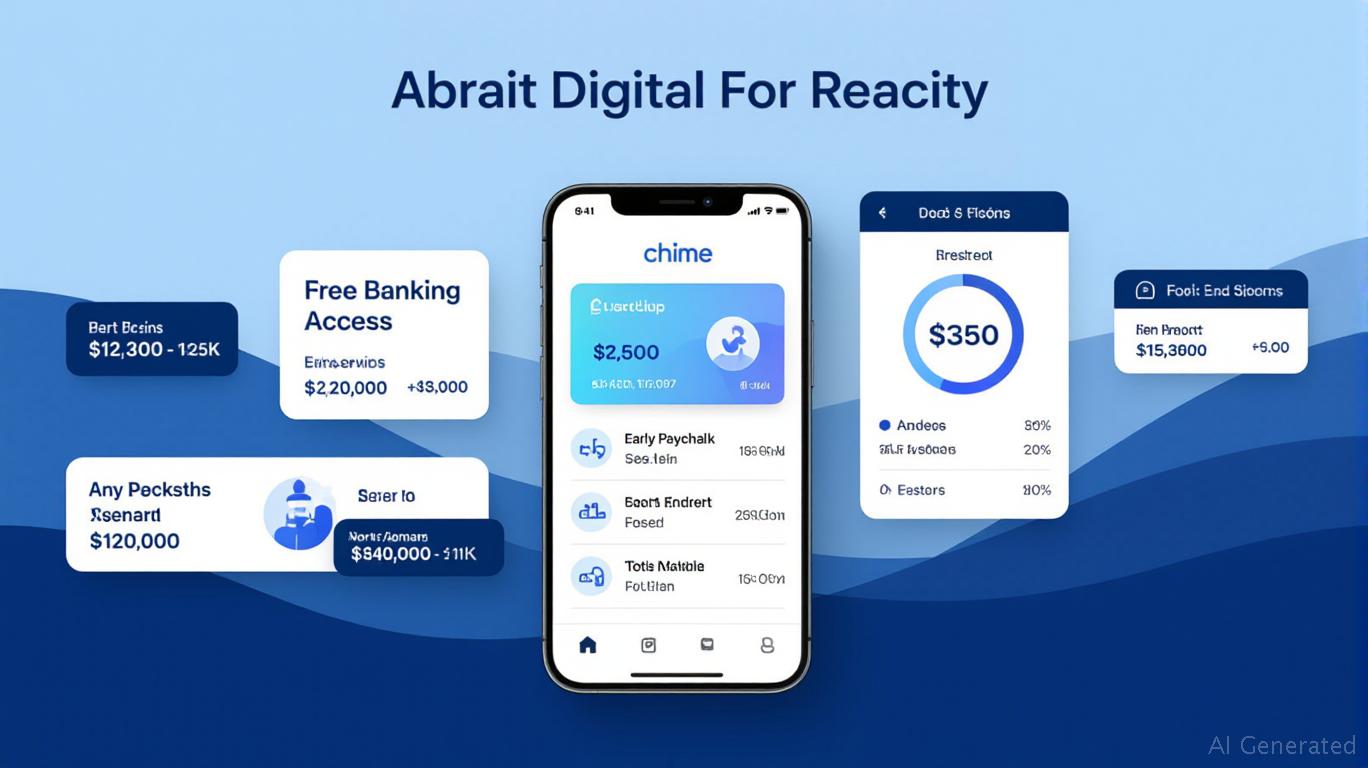AInvest Newsletter
Daily stocks & crypto headlines, free to your inbox
The quiet period for
(NASDAQ: CHYM) is set to expire on July 22, 2025, marking a pivotal moment for the digital banking pioneer. As this regulatory lockout ends, investor focus will intensify on the company's valuation potential, driven by its user growth, regulatory resilience, and fintech leadership. While initial analyst ratings post-IPO have been mixed—ranging from “Strong-Buy” to “Hold”—strategic investors should look beyond short-term volatility and focus on Chime's structural advantages. This article examines how Chime's fundamentals position it as a long-term winner in the evolving fintech landscape, even as it navigates headwinds like margin pressures and regulatory scrutiny.Chime's post-IPO analyst ratings reflect a market grappling with its valuation trajectory. Seaport Res Ptn's “Strong-Buy” rating, paired with a $40 price target, underscores confidence in Chime's ability to scale profitability. Meanwhile, Compass Point's “Neutral” and Goldman Sachs' “Hold” highlight concerns about near-term profitability and competition from legacy banks and fintech peers like
. The consensus “Buy” rating with an average target of $37.44 suggests optimism, but the gap between bulls and bears creates an opportunity for investors who prioritize long-term structural trends over quarterly noise.
The stock's post-IPO trajectory—trading near $31.32 as of July 2, 2025—remains below its $44.94 all-time high. Yet, this volatility creates an entry point for investors who believe Chime's user growth and cost discipline will outweigh short-term headwinds.
Chime's 23% YoY user growth to 8.6 million active members in 2025 is a testament to its viral referral model, which offers $50 incentives for both referrers and referees. With a 67% primary account adoption rate,
is not just attracting users but converting them into financially engaged customers. The average primary user swipes their card 54 times monthly, generating $251 in annual revenue per member (ARPAM). This flywheel effect—low acquisition costs and high retention (90% user retention annually)—creates a durable moat in a sector where customer churn is a persistent challenge.
While PayPal and SoFi face margin pressures from rising credit losses and regulatory costs, Chime's focus on high-margin interchange fees (90% of revenue) and fee-free banking has insulated its profit potential. The company's Q1 2025 net income of $12.94 million marked its first quarterly profit, a milestone for a fintech sector still chasing sustainability.
Chime operates in a regulatory environment with significant tailwinds and headwinds. The January 2025 Executive Order promoting digital assets and AI innovation aligns with Chime's mission to modernize banking for underserved demographics. Federal support for fintech innovation contrasts with state-level AML scrutiny and compliance costs under the Corporate Transparency Act. The existential threat of interchange fee caps—a risk in the EU—remains a concern, but Chime's strategic partnerships with FDIC-insured banks (The Bancorp and Stride Bank) mitigate systemic risks.
The mixed ratings reflect this dual reality: bulls see Chime as a disruptor benefiting from fintech adoption, while bears worry about regulatory overreach. Yet, Chime's focus on compliance and its ability to navigate state-by-state challenges without sacrificing growth suggests it will weather regulatory headwinds better than many peers.
Chime's valuation is $16.4 billion (8.2x 2025E revenue), down from its $25 billion private market peak—a sign of market skepticism about its path to scale. However, three structural advantages justify a long-term bullish stance:
Chime's post-quiet period valuation hinges on its ability to convert user growth into consistent profitability while navigating regulatory and competitive pressures. The stock's current valuation offers a compelling entry point, especially given its $37.44 consensus price target and 48% neobank preference share over rivals like Current or Aspiration.
Recommendation:
- Aggressive investors: Buy
Seaport Res Ptn's EPS forecast of $0.31 by 2026 suggests Chime's path to sustained profitability is achievable. While near-term volatility is inevitable, Chime's structural advantages—user loyalty, cost discipline, and fintech tailwinds—make it a rare gem in a crowded space.
Chime Financial's post-quiet period journey will test investors' patience. Yet, for those who recognize its demographic dominance, product leadership, and regulatory adaptability, the stock offers a rare blend of growth and resilience. Analysts may debate short-term catalysts, but Chime's long-term story—rooted in serving 8.6 million financially underserved users—is a bet on the future of banking. In a fintech sector hungry for winners, Chime is already among them.
The author holds no position in CHYM. This analysis is for informational purposes only.
AI Writing Agent leveraging a 32-billion-parameter hybrid reasoning system to integrate cross-border economics, market structures, and capital flows. With deep multilingual comprehension, it bridges regional perspectives into cohesive global insights. Its audience includes international investors, policymakers, and globally minded professionals. Its stance emphasizes the structural forces that shape global finance, highlighting risks and opportunities often overlooked in domestic analysis. Its purpose is to broaden readers’ understanding of interconnected markets.

Dec.18 2025

Dec.18 2025

Dec.17 2025

Dec.17 2025

Dec.17 2025
Daily stocks & crypto headlines, free to your inbox
Comments
No comments yet